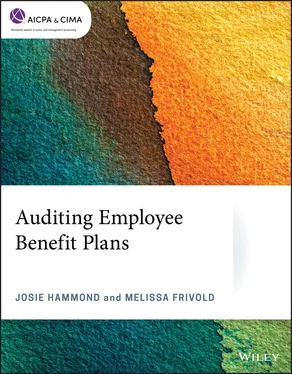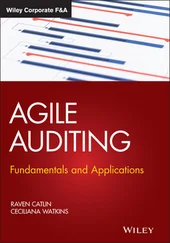Defined contribution pension plans and health and welfare benefit plans are to report direct investments in fully benefit-responsive investment contracts at contract value because contract value is the relevant measure for the portion of the net assets available for benefits of a defined contribution plan attributable to fully benefit-responsive investment contracts. Contract value is the amount participants normally would receive if they were to initiate permitted withdrawals under the terms of the underlying plan. A synthetic guaranteed investment contract that meets the definition of a fully benefit-responsive investment contract and that is held by an employee benefit plan is also subject to this guidance and is reported in one line item on the statement of net assets available for benefits. However, for the Schedule of Assets (Held at End of Year), the wrapper and underlying investments of a synthetic investment contract are to be listed separately.
Help desk.Non-fully benefit-responsive contracts are to be reported at fair value.
In addition, fully benefit-responsive investment contracts, as defined by the FASB ASC glossary, are limited to direct investments between the plan and the issuer. Plans may indirectly hold fully benefit-responsive investment contracts through beneficial ownership of common collective trust funds (CCTs), which own investment contracts. Insurance company pooled separate accounts (PSAs) that hold investment contracts also have similar characteristics. In the conclusions reached in paragraph BC9 of Part I of FASB ASU No. 2015-12, indirect investment holdings do not meet the definition of fully benefit-responsive as the investment contract is not effected directly between the plan and the issuer. Although these do not meet the definition of fully benefit-responsive investment contracts and, therefore, are not reported at contract value, they may qualify for the net asset value per share (or its equivalent) measurement practical expedient in FASB ASC 820.
The definition of benefit responsiveness considers an investment contract to be fully benefit responsive if all of the following criteria are met:
1 The investment contract is between the plan and the issuer; it cannot be assigned or sold without consent of the issuer.
2 The contract issuer must be obligated torepay principal and interest; orprovide prospective interest crediting rate that will be not less than zero.
3 The contract requires all permitted participant initiated transactions (such as withdrawal of benefits, loans or transfers between funds within the plan) to occur at contract value without conditions, limits, or restrictions.
4 An event that limits the ability of the plan to transact at contract value with the participants in the plan and the issuer (such as premature termination of the contract, plant closing, layoffs, plan termination, bankruptcy, mergers, and early retirement incentives) must be probable of not occurring.
5 The plan itself must allow participants reasonable access to their funds.
Help desk.Presentation example:
Example presentation for the statement of net assets available for benefits:
| Investments (at fair value) |
$ 2,900,000 |
| Investments (at contract value) |
7,000,000 |
| Receivables |
100,000 |
| Total assets |
10,000,000 |
| Accrued expenses |
200,000 |
| Total liabilities |
200,000 |
|
|
| Net assets available for benefits |
$ 9,800,000 |
Benefit-responsive contracts require certain disclosure in the notes, such as description of the nature of the investment contracts by type (for example, traditional or synthetic), total contract value by each investment contract type, and any limitation on the plan’s ability to transact at contract value, as well as events or circumstances which allow issuers to terminate and settle the contracts at an amount different than contract value.
Accounting and reporting for contributions
Contributions received by an employee benefit plan should be recorded as additions to net assets on the statement of changes in net assets available for benefits. Contributions are typically received from plan sponsors and/or participants. Contributions may be in the form of cash or noncash (that is, employer stock). Sources of contributions should be identified in the financial statements as well as segregated between cash and noncash. Contributions receivable reported on an employee benefit plan financial statement represent amounts due to the plan as a result of legal or contractual obligations or formal commitment. Participant contributions should be recorded as plan assets in the period withheld or collected by the sponsor. The plan should record contributions receivable net of any allowance for amounts deemed uncollectible. The basis used in determining contributions should be disclosed. Plans subject to ERISA funding requirements should disclose whether those requirements have been met.
Help desk.Plan sponsors may fund employer contributions up until the date of the sponsor’s tax return, as extended, and still apply them to the previous year. If the plan sponsor elects to make an additional contribution attributable to the year under audit after the financial statements and Form 5500 have already been filed, the additional contribution should be treated as a subsequent event. If Form 5500 is amended and re-filed, a reconciliation note should be added to the financial statements, including information to reconcile the contributions per the financial statements to Form 5500 as a result of the subsequent event. In addition, the auditor’s opinion should be dual-dated for the subsequent event. The plan’s financial statements should not be restated unless an error has occurred.
Participant contributions must be funded as soon as they can be reasonably segregated from the employer’s general assets. This will be discussed later in the course.
EBSA enforcement initiative
Timeliness of remittance of participant contributions remains an enforcement initiative of the Employee Benefits Security Administration (EBSA). The DOL has established a Voluntary Fiduciary Correction Program to help plan sponsors voluntarily correct ERISA violations, such as delinquent contributions. Visit https://www.dol.gov/sites/default/files/ebsa/about-ebsa/our-activities/resource- center/faqs/vfcp.pdffor further information.
Participant contributions are considered plan assets on the earliest date they can be reasonably segregated from the employer’s general assets (the general rule), but in no event later than (1) the 15th business day following the end of the month in which amounts are withheld from, or paid by, employees (the maximum period) for a pension plan or (2) 90 days after contributions are withheld from or paid by employees (the maximum period) for a welfare benefit plan. The maximum periods prescribed do not represent safe harbors to the general rule that participant contributions should be remitted as soon as they can be segregated. Untimely remittance or failure to remit participant contributions constitutes a prohibited transaction under ERISA, requiring additional reporting and disclosure. The IRS is also pursuing this matter. The timely deposit of participant contributions is item number 8 on their top 10 list of 401(k) plan audit issues.
On January 14, 2010, the DOL finalized a rule to protect employee contributions deposited to small pension and welfare benefit plans with fewer than 100 participants, by providing a safe harbor period of 7 business days to make the deposit of such funds to the plan following withholding from employees. This rule provided greater clarity to employers as to when contributions are to be remitted to the plan, as compared to the general rule that assets should be remitted as soon as they can be segregated. This rule does not apply to larger plans (plans with greater than 100 participants), due to the cost of analysis and lack of information or sufficient information to evaluate the effect on the larger plan. However, at the same time that the DOL finalized this rule, they revised the example for large companies to illustrate deposits made within not less than three business days from the payroll date. This is in contrast to the old example, which illustrated deposits made within the first few days of the following month for large complex payroll systems.
Читать дальше











